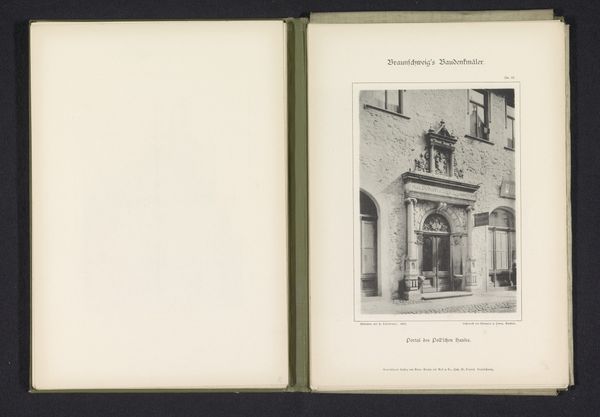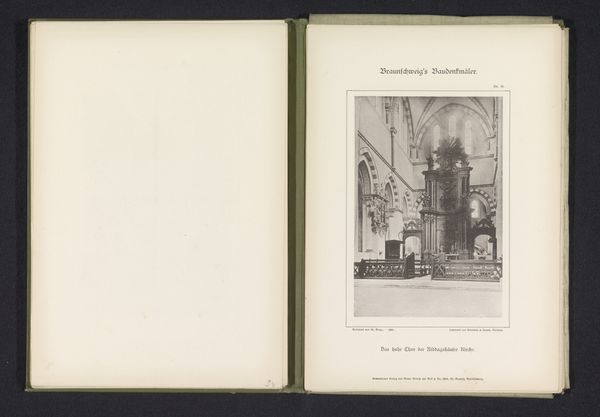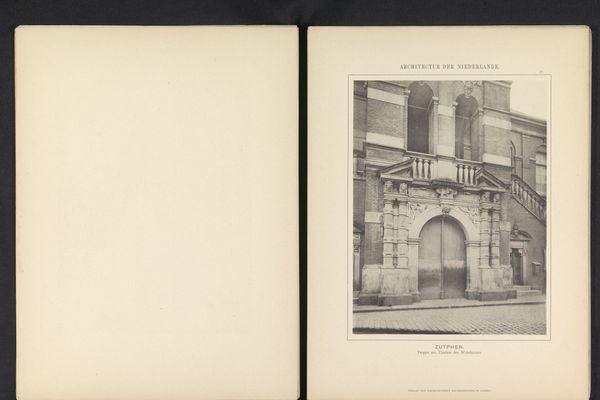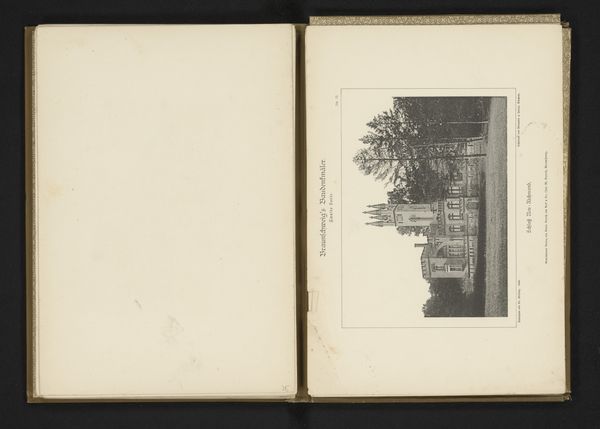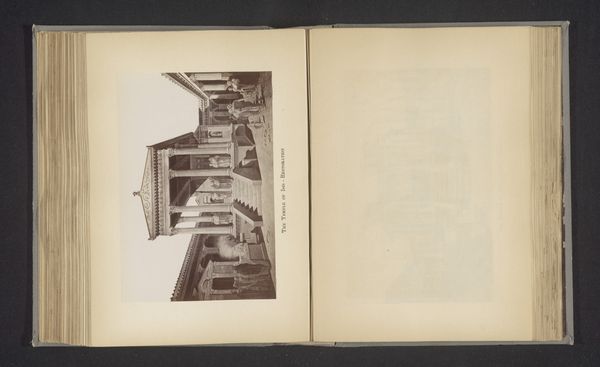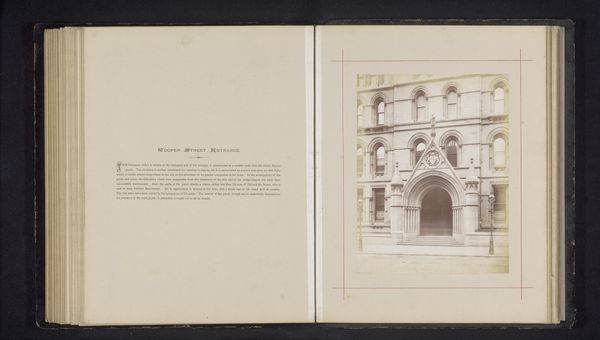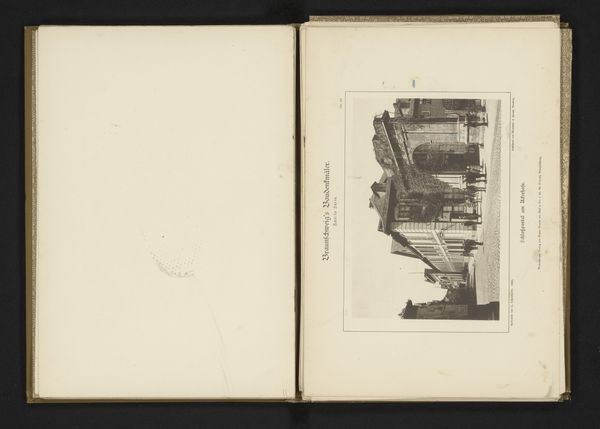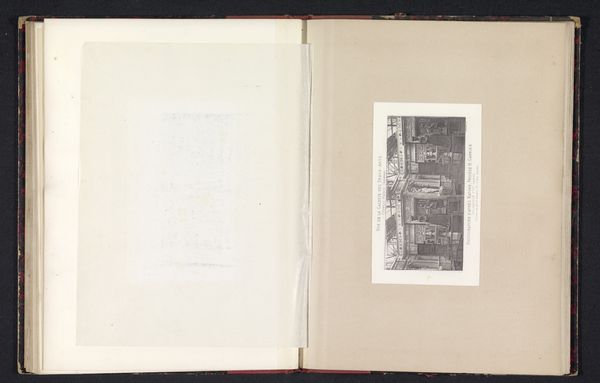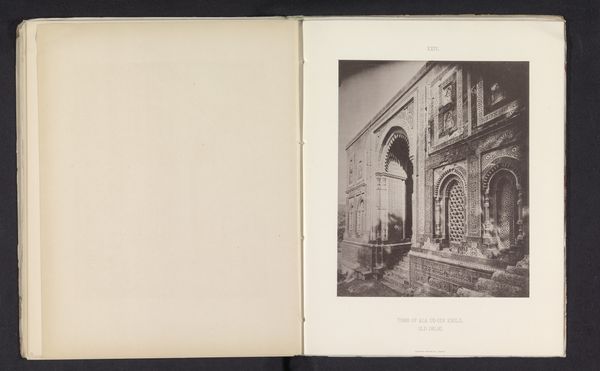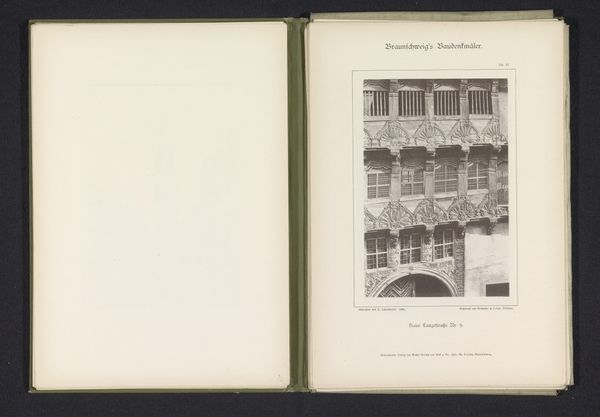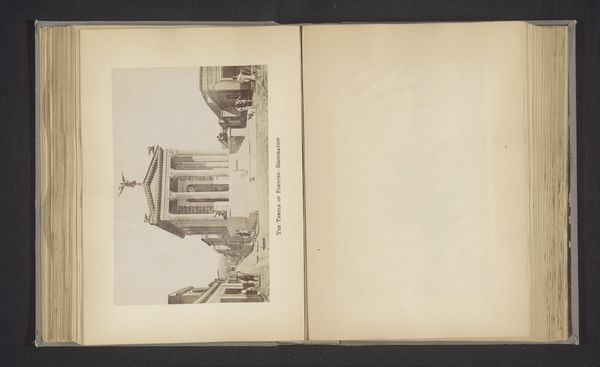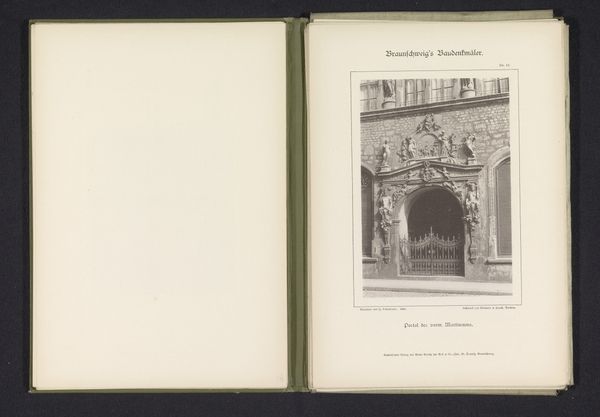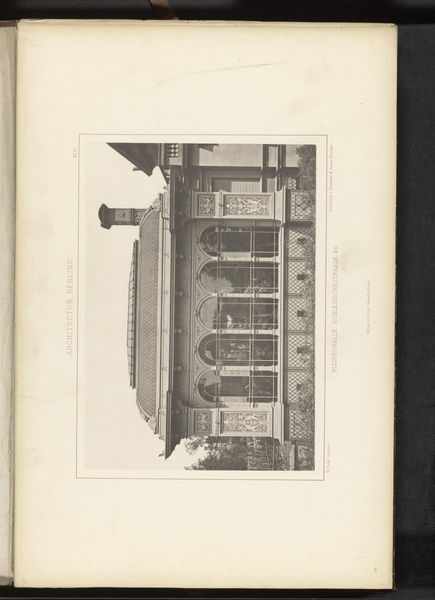
Dimensions: height 160 mm, width 106 mm
Copyright: Rijks Museum: Open Domain
Curator: Looking at this photographic print titled "Toegangsportaal van de leenbank te Braunschweig," dating back to 1892 by J. Schombardt, I am struck by the representation of civic pride on display through neoclassical architecture. Editor: My first impression is the intense detail! The ornate carvings practically leap off the page. It evokes a feeling of solid, impenetrable wealth. Curator: Absolutely. The bank's architecture, imbued with neoclassical elements, broadcasts a message of stability. The careful choice and deployment of Neoclassicism serve the Leenbank’s mission to assure its stakeholders, particularly depositors, of the security of their holdings. This speaks to how the elite were making a visual claim to authority. Editor: You can see echoes of Roman triumphal arches in the doorway, meant to instill a sense of awe and perhaps even submission. The carvings above the entrance remind me of caryatids, evoking feminine power, even as they bear the weight of the balcony. Curator: Indeed, classical allusions tie directly into an idealized past that elites seek to revive. This kind of imagery reinforced existing hierarchies in Braunschweig at the time. Editor: And it's clever how the building's very structure conveys trustworthiness and reliability. Did the Neoclassical movement see a rise of prominence for public-facing institutions? Curator: Undoubtedly. The visual vocabulary became a powerful tool to broadcast a commitment to established virtues in the civic arena. In a society undergoing massive transformations, architecture, especially that of institutions such as banks, helped reinforce societal values, like security. Editor: Looking at this photograph has made me consider how public institutions often project an image of themselves to build public confidence through architectural vocabulary, which, when you analyze it, reveals how powerful the symbolism in architecture can be. Curator: Precisely, a simple print like this serves as a document of those processes, linking design with socio-political history.
Comments
No comments
Be the first to comment and join the conversation on the ultimate creative platform.
